Search
Recent Search
Directory Shop

Recent Search
Directory Shop
15 May 2025

Memories drawn from different eras—of people, places, and inventions—are meticulously cut, layered, and pieced together into a collage that forms the distinct artistic signature of Thai artist Nakrob Moonmanas. Recognized for his ability to bring Thai cultural elements into dynamic exchange with other traditions, Nakrob presents Greetings of Times (Kala Patisantharn), a work that explores the modern atmosphere of Bangkok’s Wireless–Rama IV district. The piece reflects on how modes of communication have shifted across time, from the distant past to the present, while extending a greeting toward the future.
Though widely recognized for his two-dimensional works, Nakrob has steadily expanded his practice into various media, including three-dimensional forms and moving images. In this work, he employs copperplate printmaking, combining both traditional and digital technologies. Through a process of gathering, arranging, cutting, and layering, he constructs a visual narrative that invites reflection across multiple timeframes.
Step into the story behind the work and the inspirations that shaped it—an invitation to journey back in time, swim forward through the current of history, linger in the present moment, and open the door to a renewed conversation.
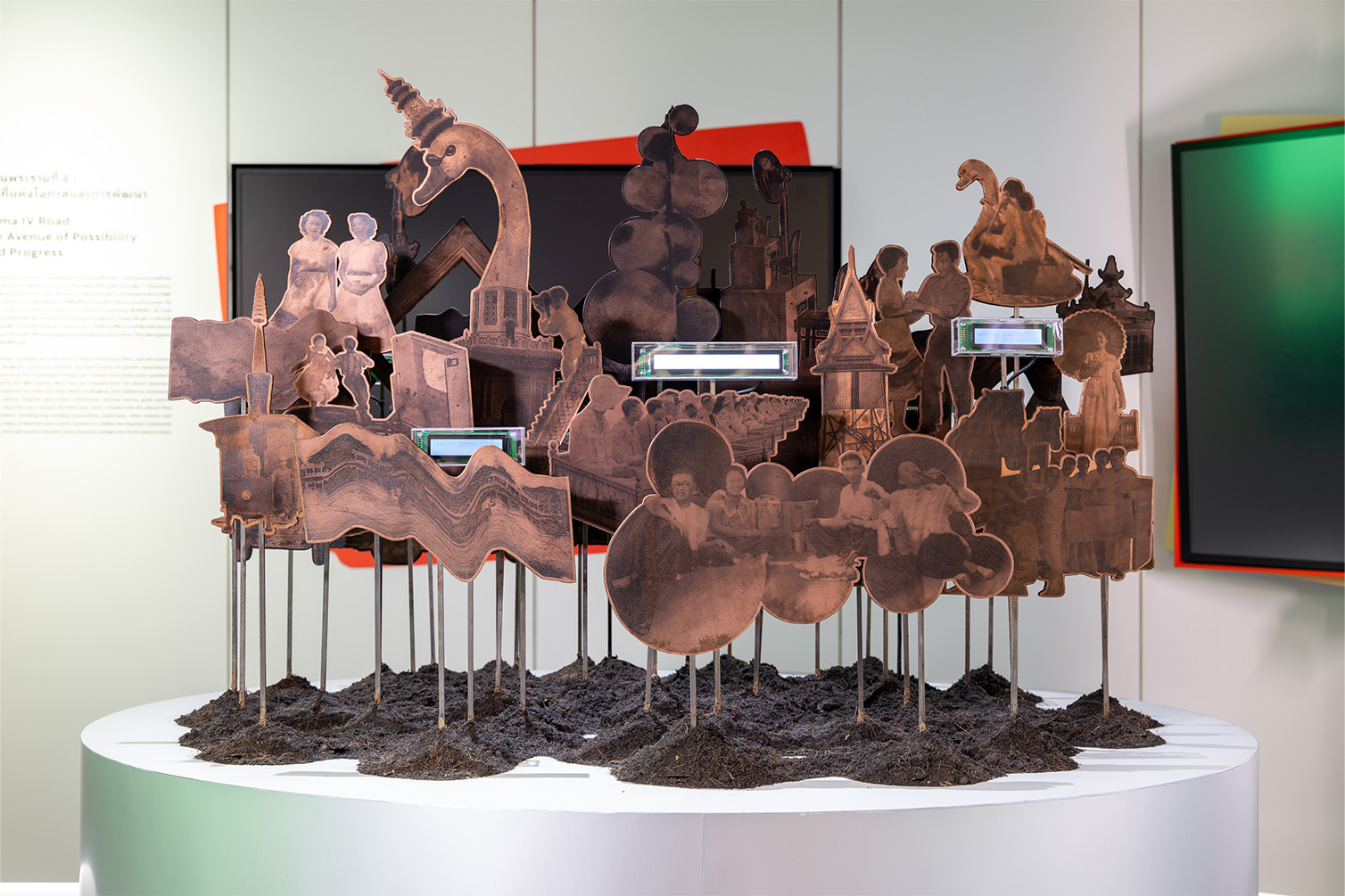
01 Memories of Days Past
This copperplate sculpture is designed to be viewed in the round, offering a richly layered composition that brings together fragmented images of memory, a cluster of free verse–like elements that invite reflection, and an earthen base that feels at once grounded and delicately unstable.
In creating this piece, Nakrob reoriented his usual practice, shifting from a narrative approach centered on time to one focused on place. The work draws from the layered histories of the Wireless–Rama IV area, a district long associated with modernity and the site of numerous key moments in Thai history.
“Normally, my work revolves around time or specific eras,” Nakrob explains. “But for this piece, I wanted the story to emerge from the site itself. Through my research, I learned that this area was once an open field that gradually developed over time. “During the reign of King Rama VI, Lumphini Park was created here. There were also proposals to use the site to host an international exposition, which eventually led to the hosting of the Siamese Kingdom Exhibition. It was also the location of Thailand’s first radiotelegraph station—a piece of history that not that many people know about.”
Scattered details and overarching historical images, long hidden in collective memory, resurfaced during the artist’s research. The work was created specifically for exhibition at The Wireless House One Bangkok—a conservation project of Saladaeng Radiotelegraph Station. It reawakens the site’s dormant stories, bringing interwoven narratives together once more, retold through the lens of contemporary reflection.
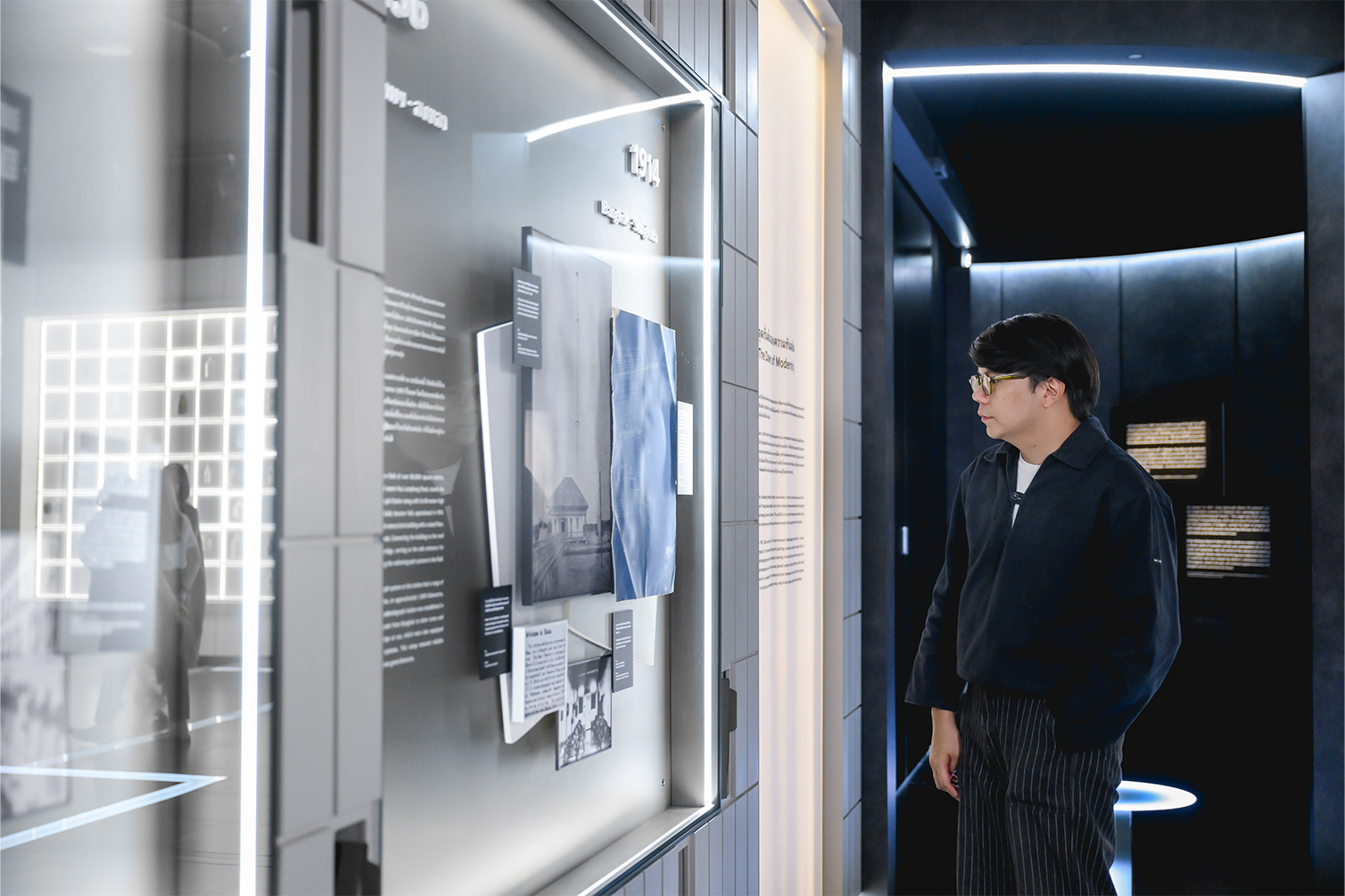
“I began with the history of the Saladaeng Radiotelegraph Station, an area I wasn’t familiar with. I tried to uncover its story through the work being done by the team at The Wireless House One Bangkok, which involved archaeological excavations and site research. The discovery of physical remnants, and the stories of Thailand’s first radiotelegraph station, proved significant. It speaks to a moment of forward movement, when the country was stepping into a new dimension, a new territory. One might say it marked our entry into modernity.
“This time, I looked back to a past moment when Thailand was reaching toward the future. I tried to interpret how, in the present, we might draw connections between that past and a future yet to come.”
A clocktower built in the era of the Siamese Kingdom Exhibition, its spire drawn from the head of a duck paddle boat once seen at Lumphini Park; a tram fused with unfamiliar architectural forms; elongated buildings; dancers and passersby—all are pieced together from both personal memory and archival research of the artist.
“My earliest image of this place is from childhood visits to Lumphini Park and the old Suan Lum Night Bazaar. I witnessed many changes over time and included traces of those memories in the work—echoes from my own era. After that, I tried to look deeper, into times I couldn't quite rightly picture—what happened between the reign of King Rama VI and the present. I tried to piece together that history: the development of Wireless Road, the arrival of foreign embassies, the influence of Western culture with its polo clubs, dance halls, and Constitution Day celebrations that once took place in this very area.
“As the work began to take shape, I realized that this area felt like an extended journey—one that has always pointed toward the future. That’s why I chose to assemble elements both familiar and distant, to layer and position them together within the same space.”
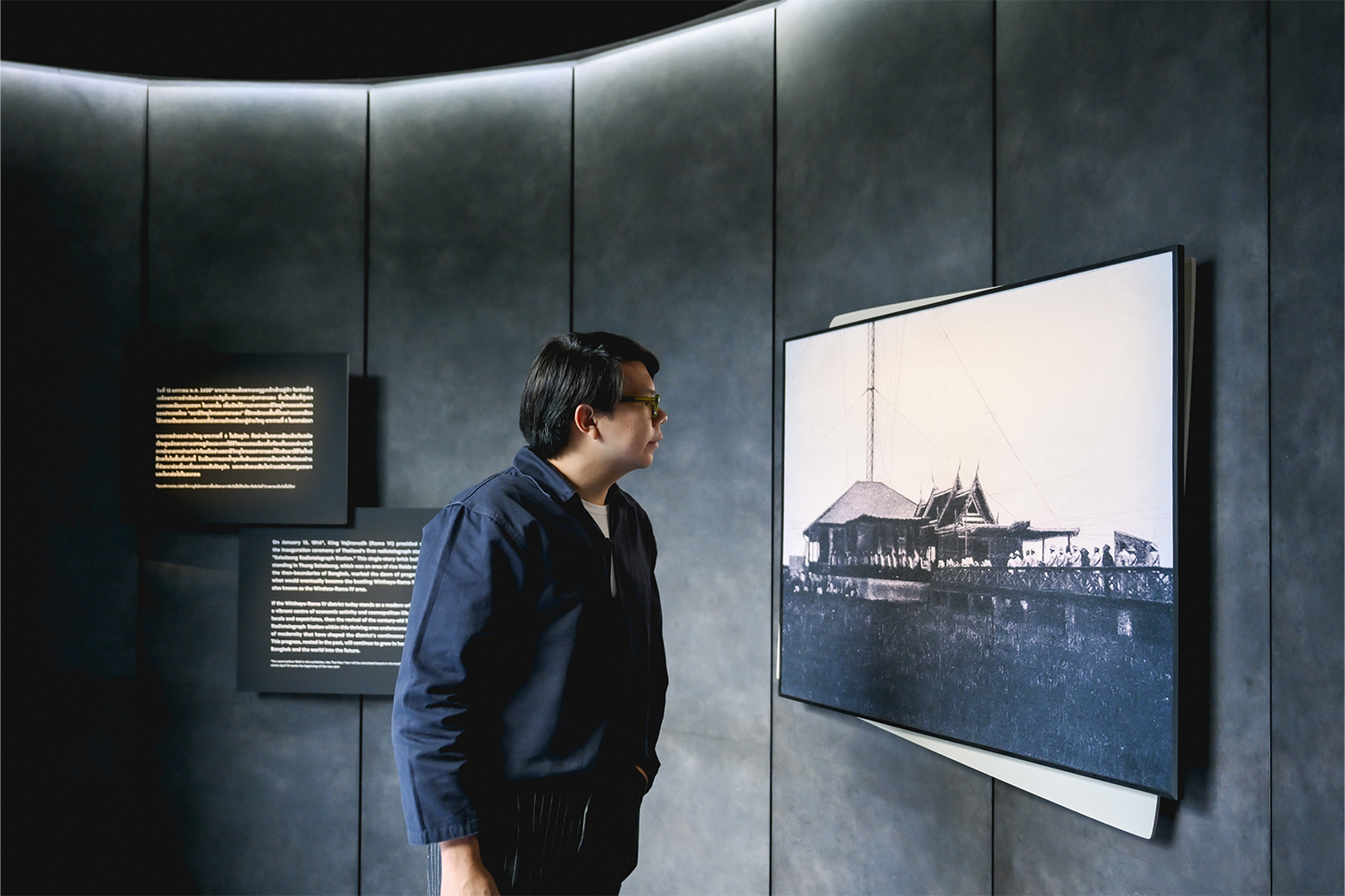
02 A Dialogue Across Time
Past, present, and future are brought into quiet conversation through Greetings of Times (Kala Patisantharn), a sculptural work by Nakrob Moonmanas. The piece draws inspiration from a pivotal moment in Thai history: Thailand’s first ever radiotelegraph message, sent by King Vajiravudh (Rama VI). The content of that message reads:
--. .-. . . - .. -. --. / - --- / -.-- --- ..- / --- -. / - .... .. ... --..-- / .-- .... .. -.-. .... / .-- .. .-.. .-.. / -... . / --- -. . / --- ..-. / - .... . / -- --- ... - / .. -- .--. --- .-. - .- -. - / -.. .- -.-- / .. -. / --- ..- .-. / .... .. ... - --- .-. -.—
Greeting to you on this, which will be one of the most important day in our history
“I see the transmission of information, and the unfolding of stories tied to this area, stemming from those seventeen words in Thailand’s first radiotelegraph message. One word in particular stands out: greeting. To me, it’s not just a relic from the past. It continues to live alongside us, woven into the fabric of everyday life. And it’s a word that will carry us forward into the future,” Nakrob reflects.
The sculpture takes form in copper—a material layered with symbolism and history. Once vital to the mechanics of telegraphy and widely used in printmaking, it now becomes a vessel, both physical and metaphorical, for the transmission of thought. Nakrob draws upon its past life and reframes it as a carrier of messages, linking it to the role once played by the Saladaeng Radiotelegraph Station. At its core, the work orbits around the circulation of stories—how they travel, expand, and endure.
“This is the first time I’ve worked with copper plates and printmaking,” he notes. “As I mentioned, the period following King Rama VI, around the early 1950s, is a time I can hardly visualize. I have no clear mental image of it. So the act of pressing memory into a plate allows something once vague to take form. It makes the past tangible again, sealing a trace of memory into an object that others can continue to see, long into the future.”
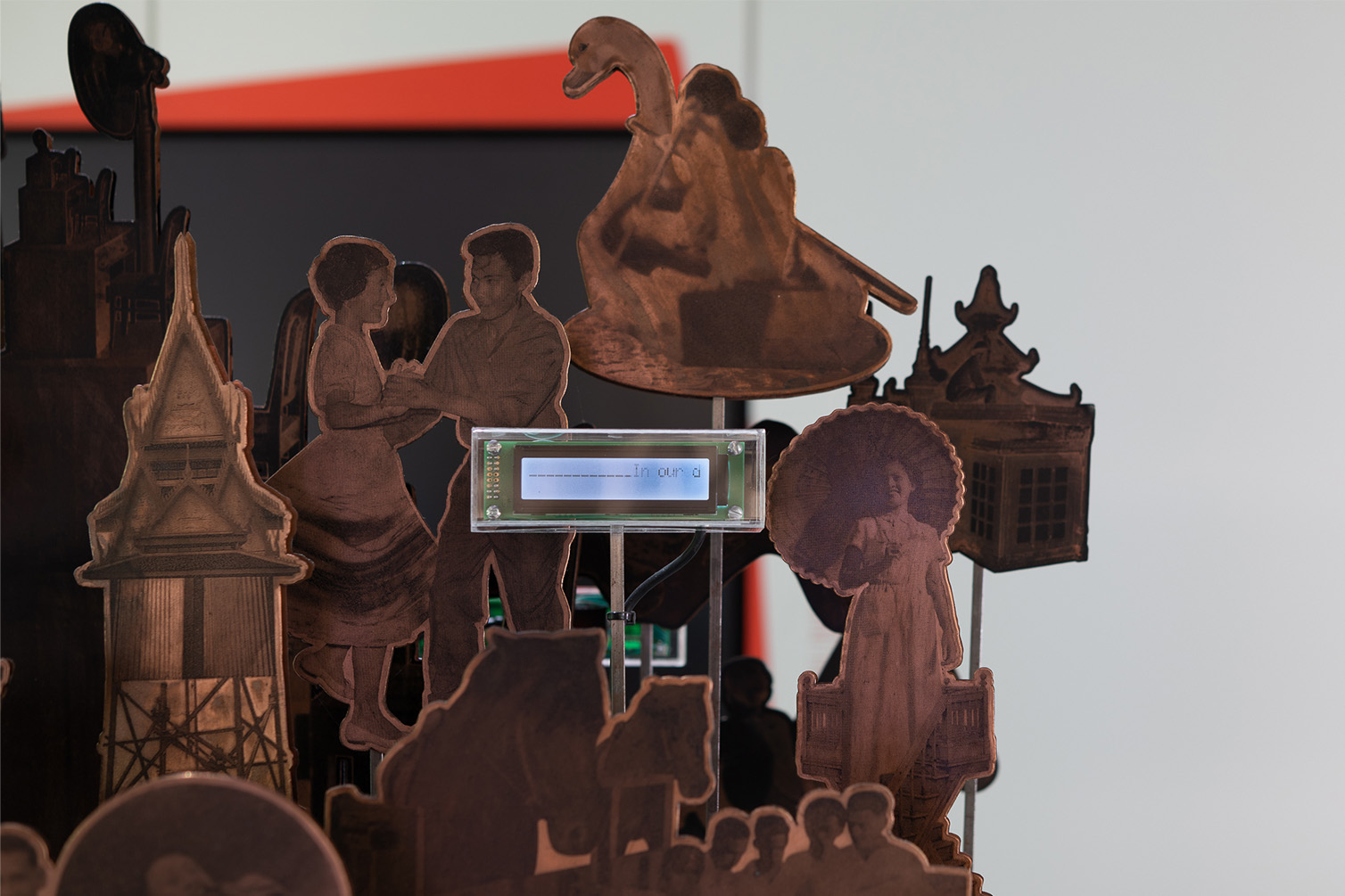
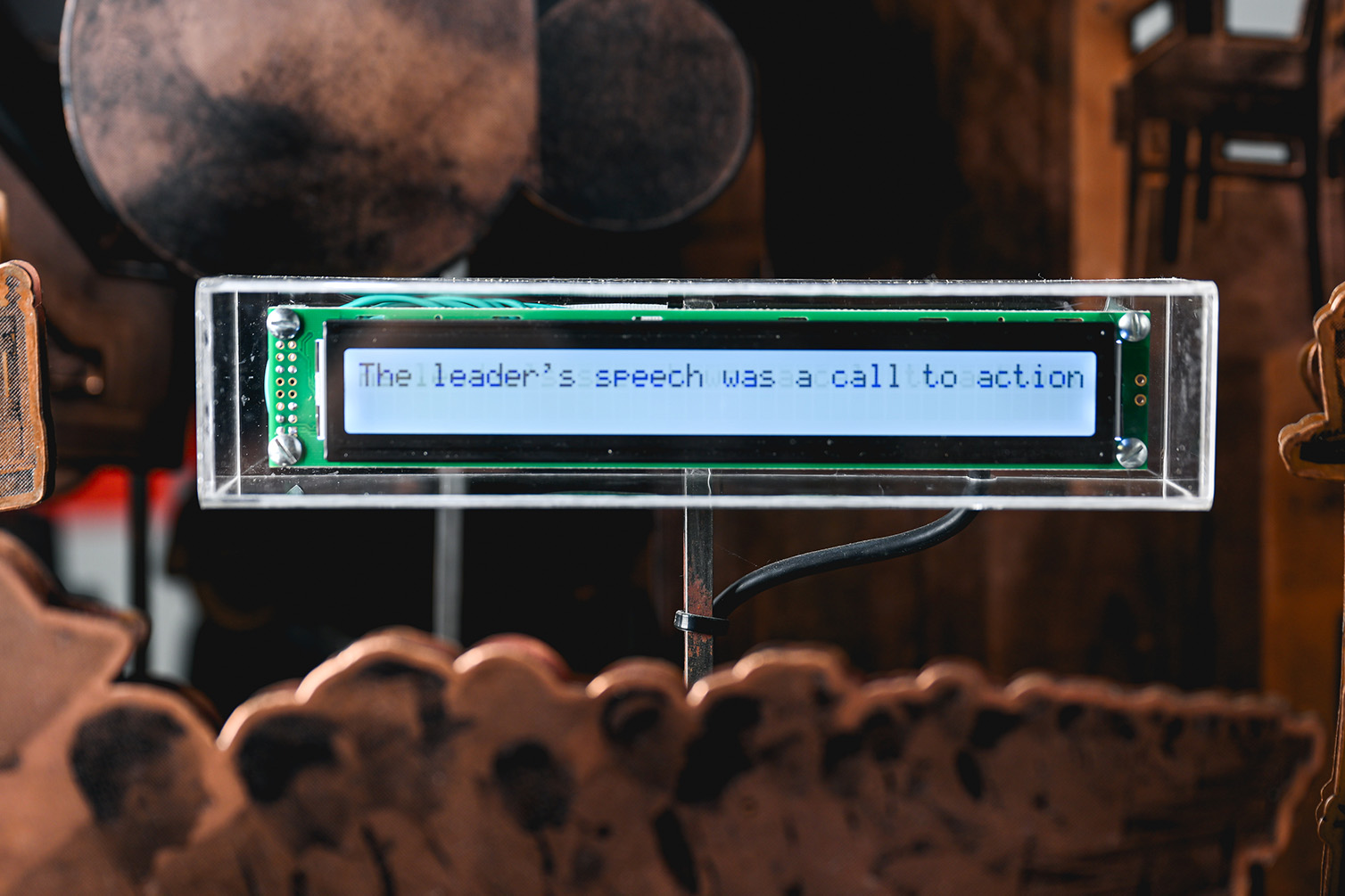
Amid the copper plates, a small LCD screen may come as an unexpected addition from an artist known primarily for collage. But here, Nakrob extends the language of collage beyond the familiar image plane by reworking the very first radiotelegraph message ever transmitted in Thailand: a 17-word note sent from Bangkok to Songkhla. Those original words are disassembled and reassembled into a new visual-textual composition.
“At first, I tried rearranging the words into a loose sequence. They started to take on the rhythm of free verse, like lines of poetry composed from the voices of people in the past,” Nakrob explains. “Then I began thinking: shouldn’t this also speak to the future? So I used the 17 words as a prompt for artificial intelligence, allowing it to generate further text in response.”
"I think this is Greetings of Times. It’s a temporal exchange in which words from one era are processed through the lens of the present. Artificial intelligence, standing in as a proxy for the future, reinterprets the past in a new form. It became a synthesis of human thought, AI, and layers of time—past, present, and future—all converging and cycling through this single space.”
At the base of the sculpture, the soil grounds it all. It serves as a quiet reminder of the land’s enduring presence. No matter how time shifts, buildings rise and fall, or people come and go, the earth remains—a witness to it all.
“The soil serves as a link to the site’s past; a place that once hosted the Royal Ploughing Ceremony. Go back even further, and it was simply an open field, a stretch of land onto which people across different eras arrived and inscribed meaning. That’s why the base of this work takes the form of earth—out of which buildings, activities, and sculptural elements appear to emerge, as if organically grown from the ground itself.”
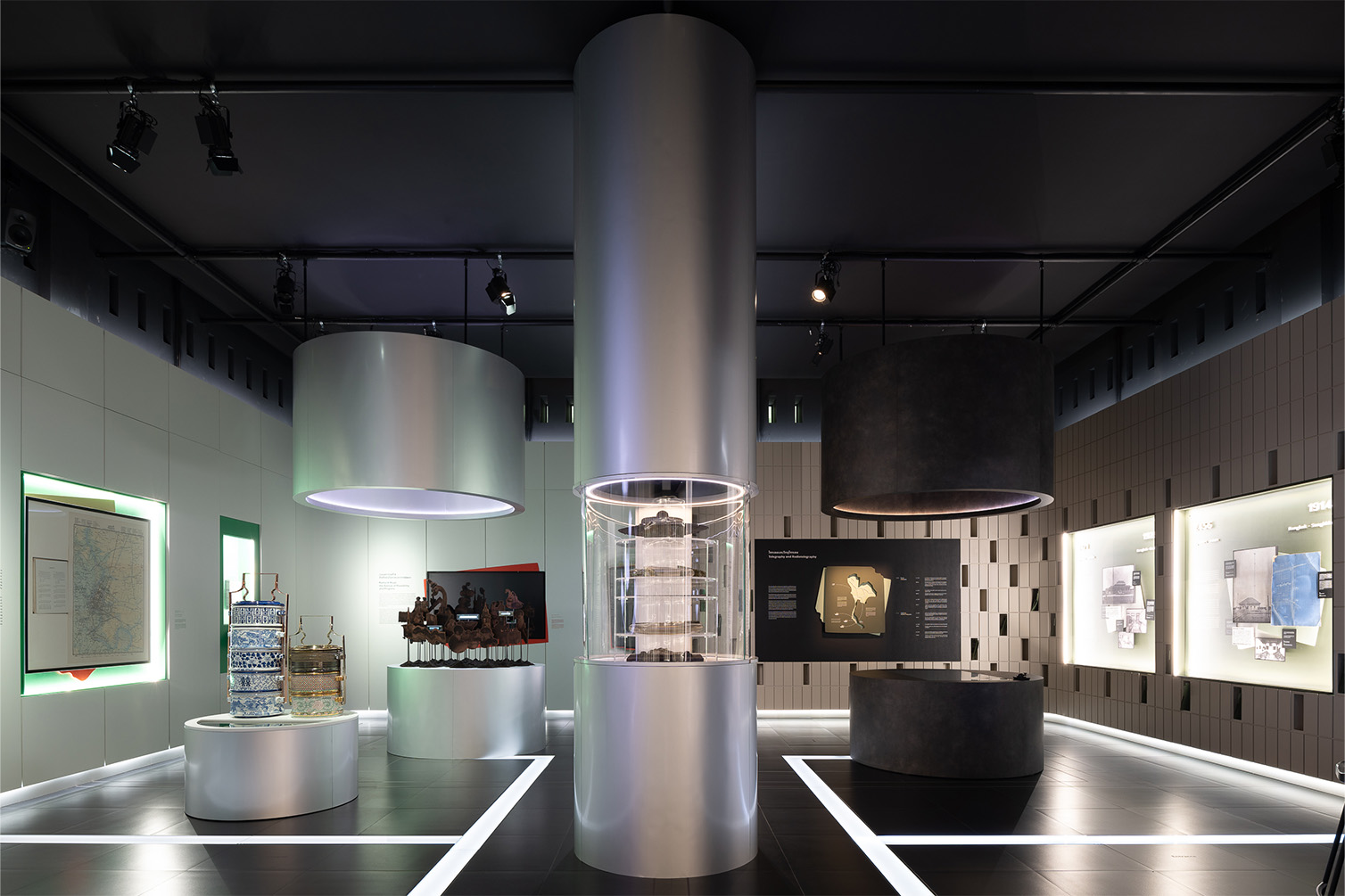
03 Extending Memories
Part of the pleasure in experiencing Nakrob Moonmanas’s work lies in its layered unfolding. At first glance, it’s the tension between conflicting yet harmonious elements that catches the eye—an arresting combination that makes one pause. Then, the gaze begins to drift, searching for the multitude of minute details the artist has tucked away. Finally, the narrative emerges; sometimes clearly defined, sometimes faint and elusive. It’s this slow revelation that many find so captivating.
In this new work, Nakrob invites viewers to observe the sculpture from all angles. Designed for full, 360-degree viewing, the piece grows richer when one takes time to piece together its many references—memories intertwined with the story of Thailand’s first radiotelegraph station, and the surrounding Wireless–Rama IV area, now home to The Wireless House One Bangkok.
“What I find compelling is that this piece doesn’t stand apart as a singular object. It’s part of the place,” Nakrob says. “It connects seamlessly with the site, resonating with historical fragments—whether archaeological finds, maps, books, archival material, or other artworks exhibited here. I encourage viewers to walk around it and draw those connections for themselves.”
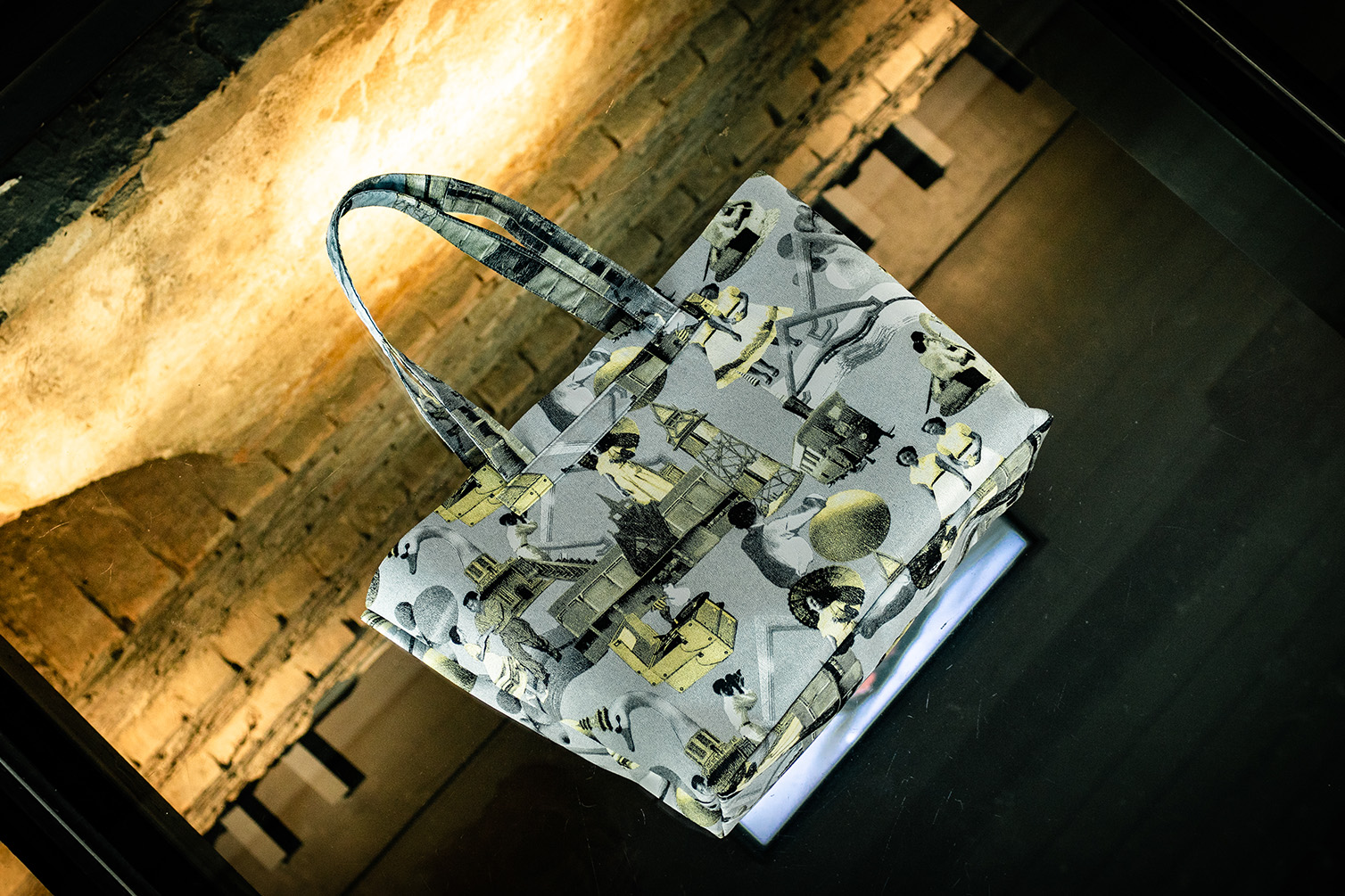
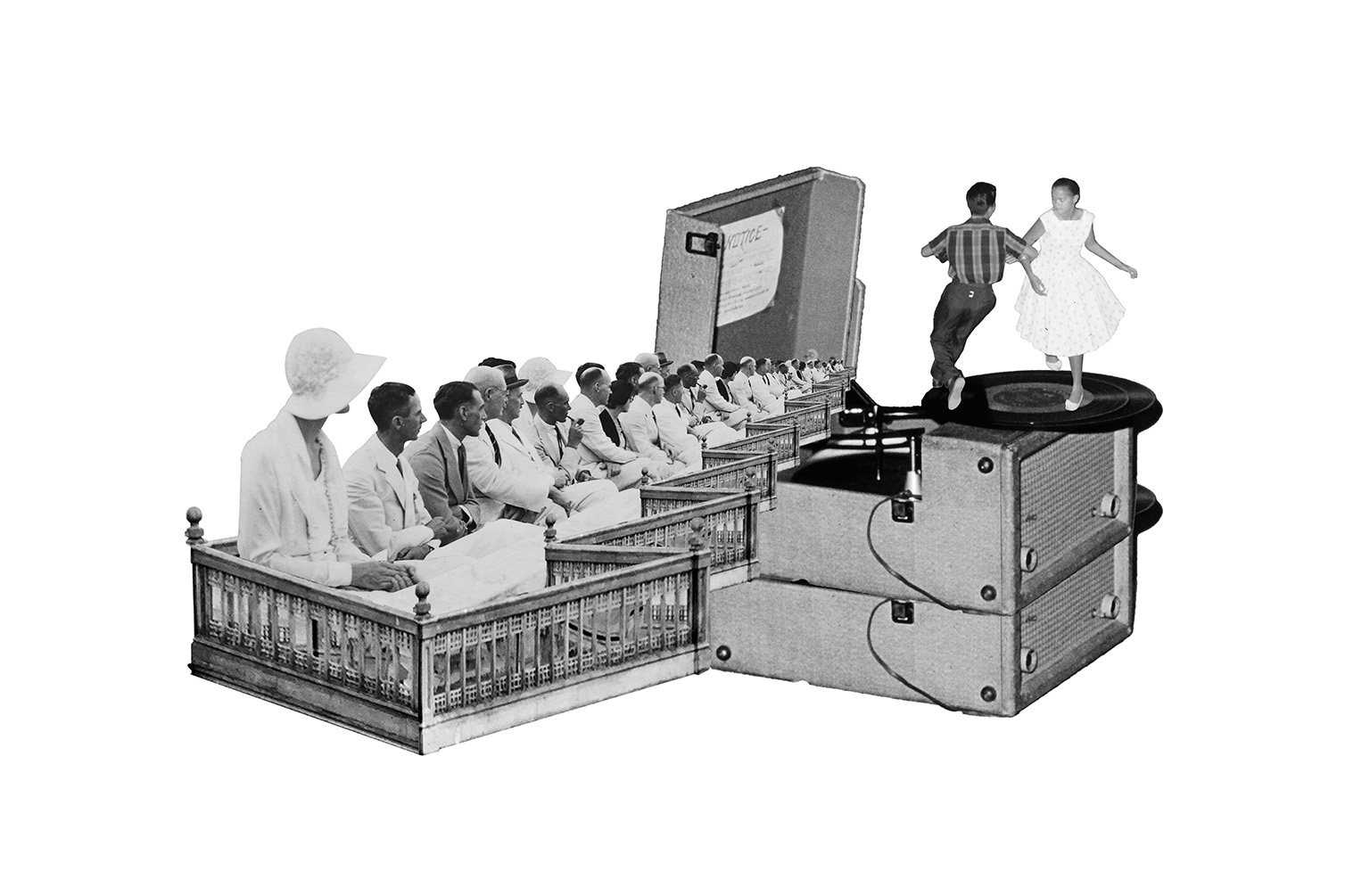
As a collage artist, Nakrob Moonmanas is also deeply invested in bringing forgotten stories, and art itself back into everyday life.
“One special quality of copper plates is that they can be used to produce prints. When we create something as a work of art, there’s a limit to how widely it can circulate,” he notes.
“So I thought, since the plate already exists, why not let the work branch out a bit? I wanted to translate it into a series of small, collectible art objects—limited-edition keepsakes available through The Wireless Club. That way, people can engage with the work on different levels and through various forms. It’s a way of expanding how the piece can be experienced, introducing new mediums, and remaining true to the concept I had studied.”
Greetings of Times by Nakrob Moonmanas is on view at The Wireless House One Bangkok. The exhibition is open daily, free of charge, from 10.00 - 20.00 Hrs.
Gallery
Tag
SHARE